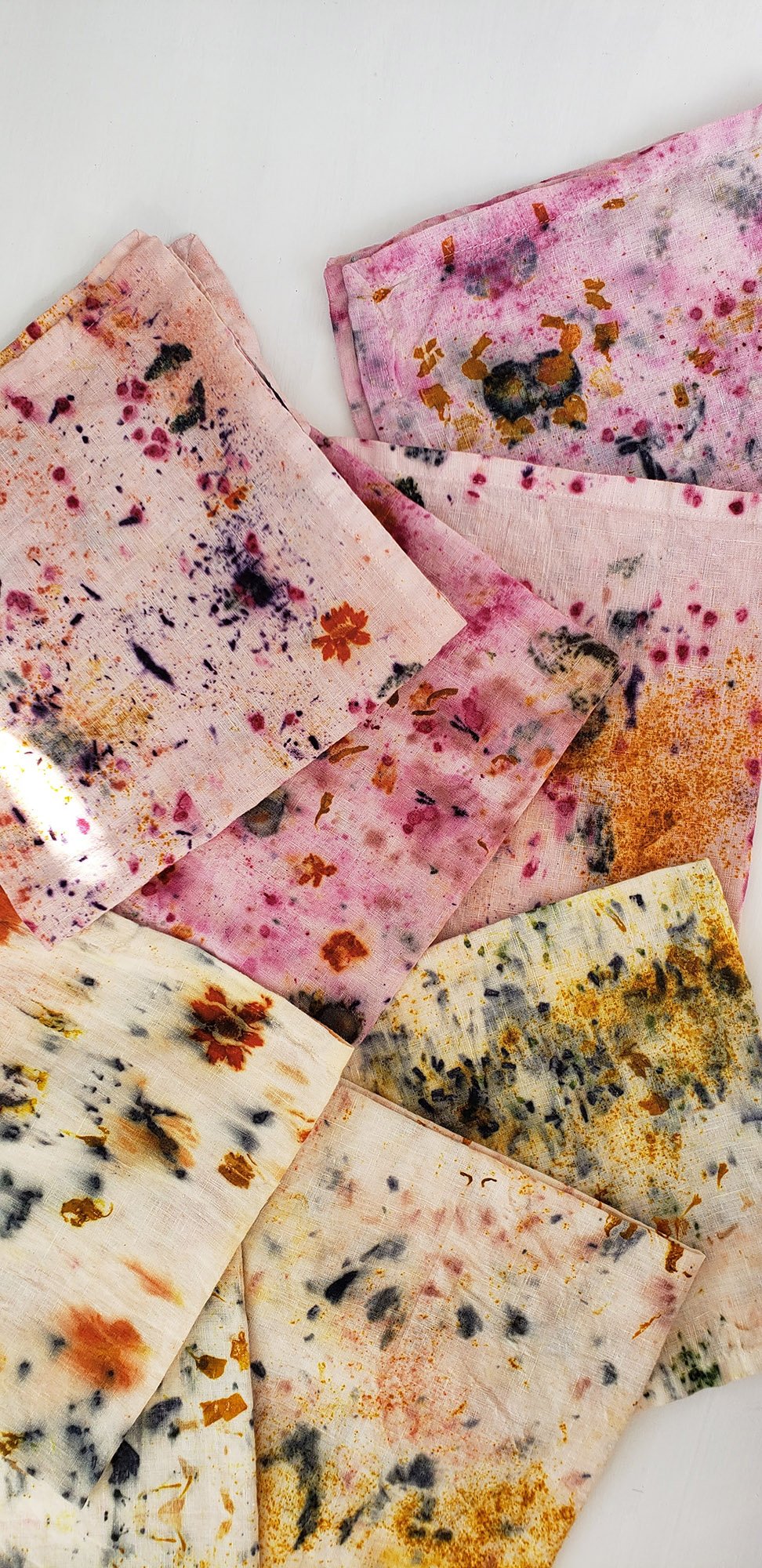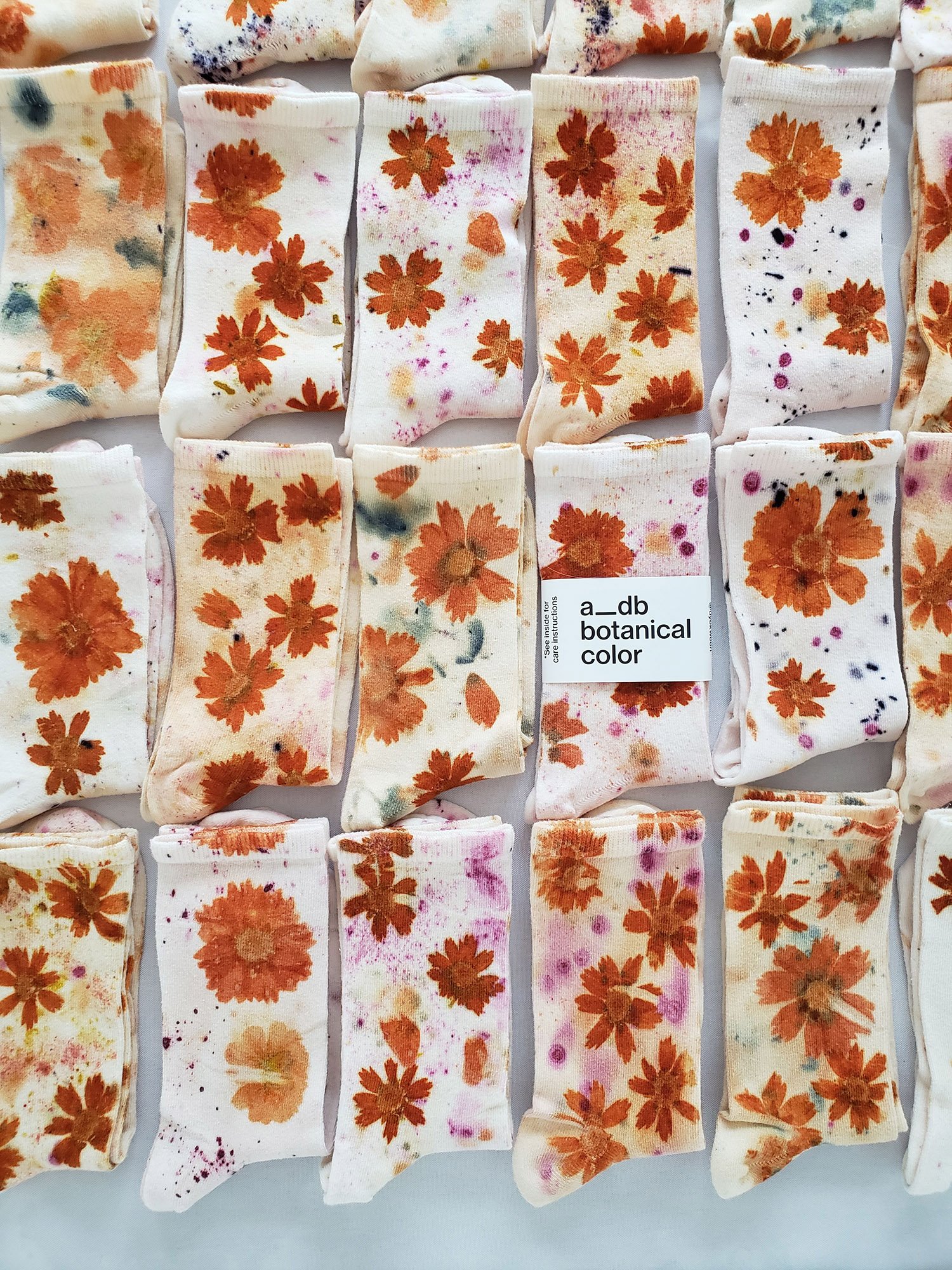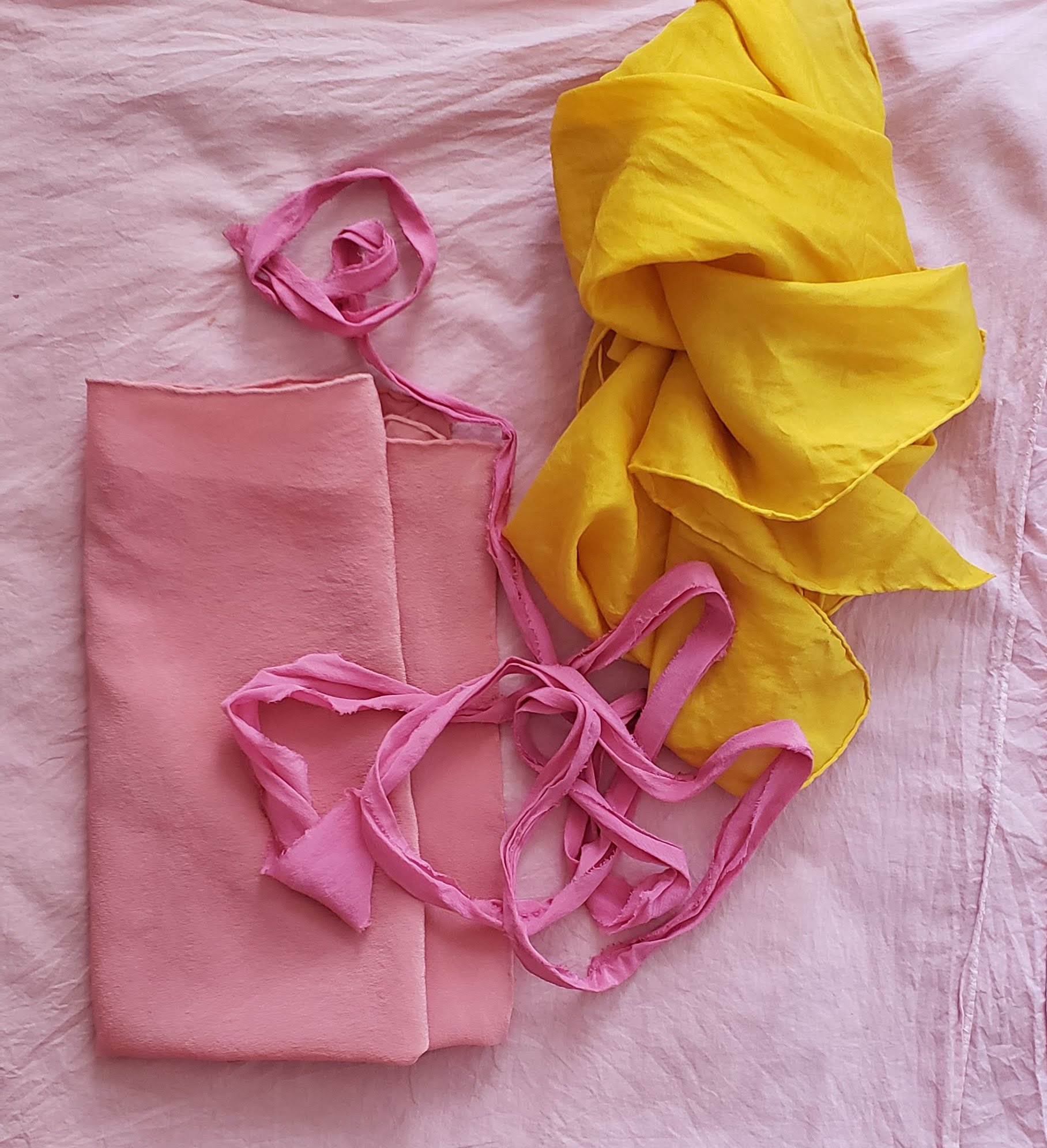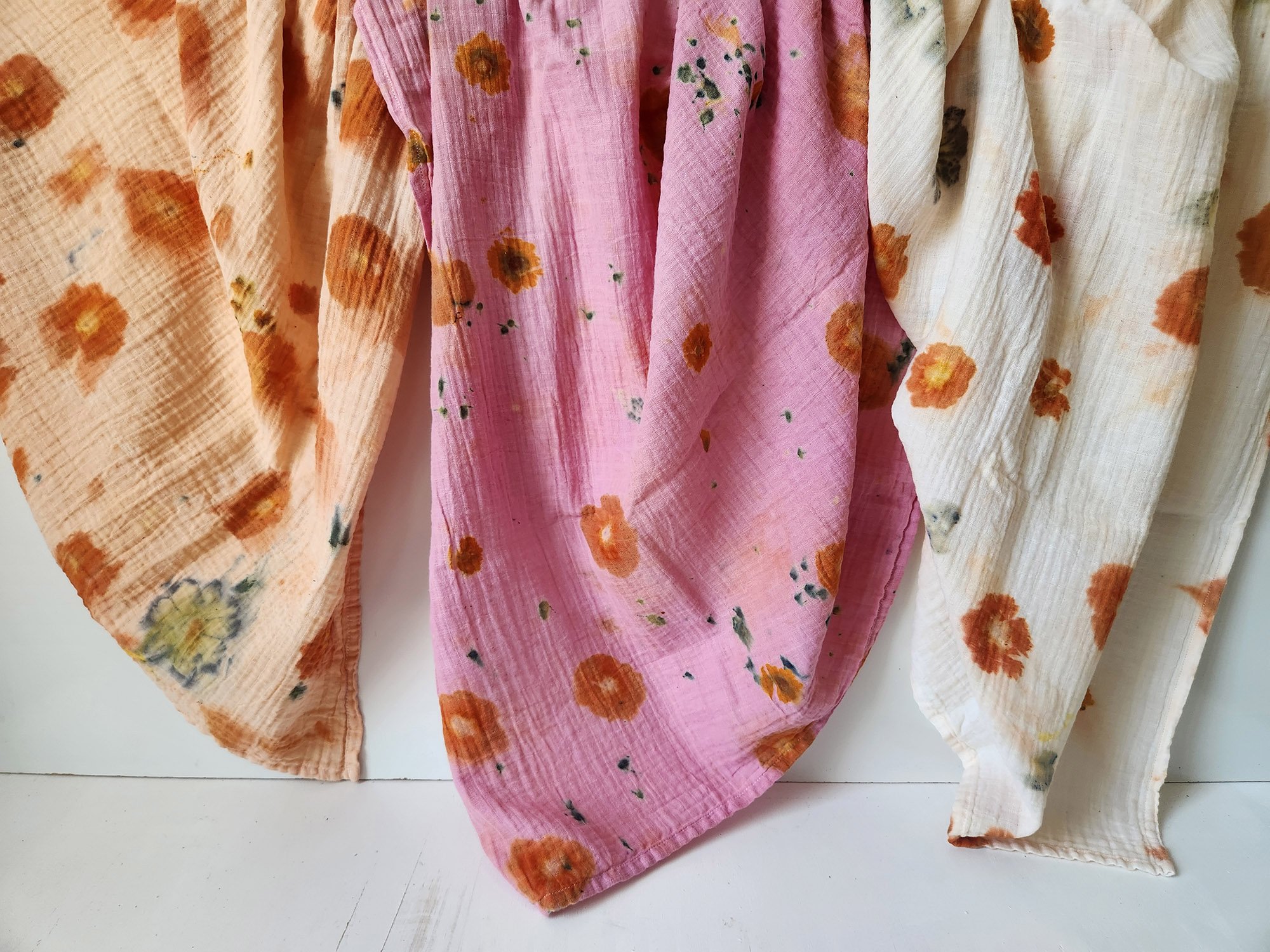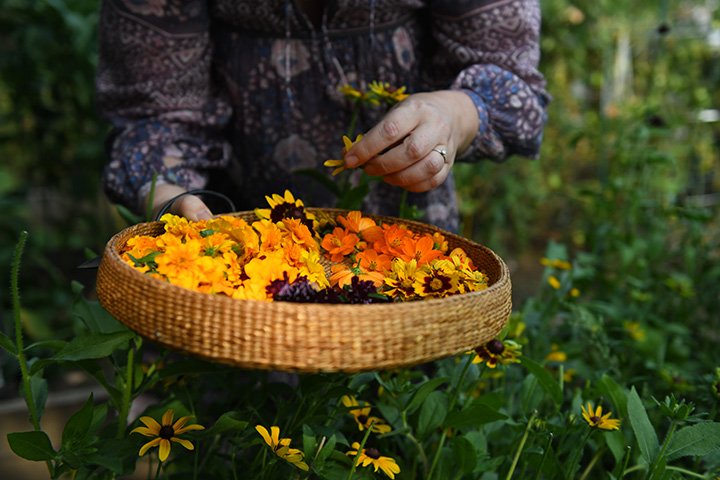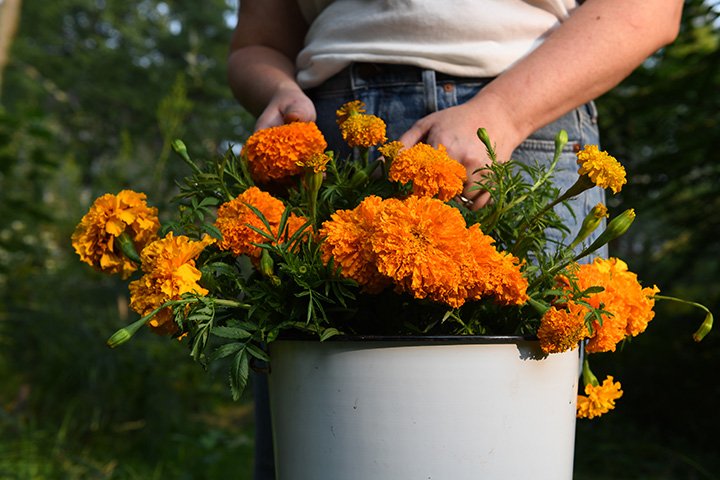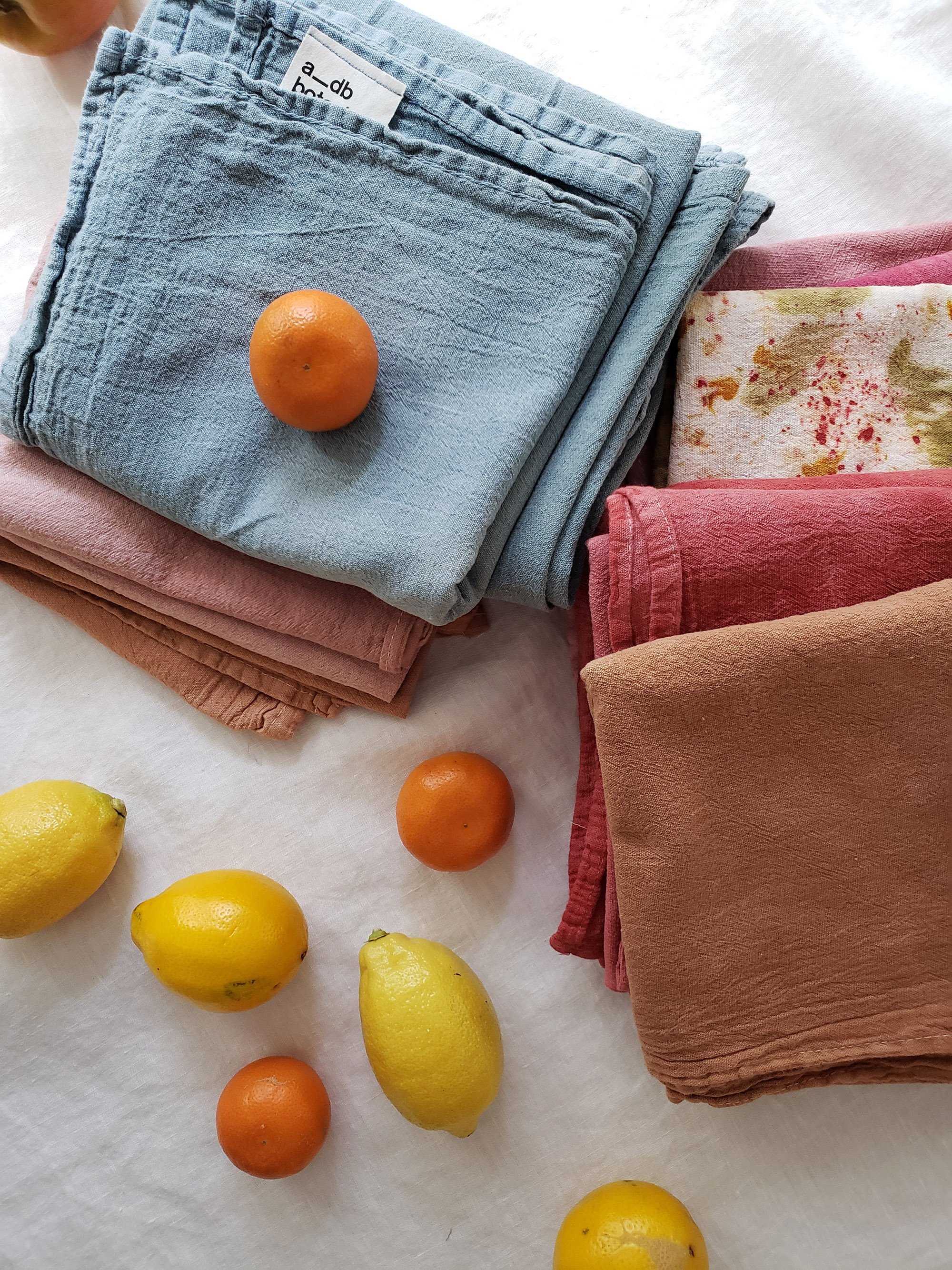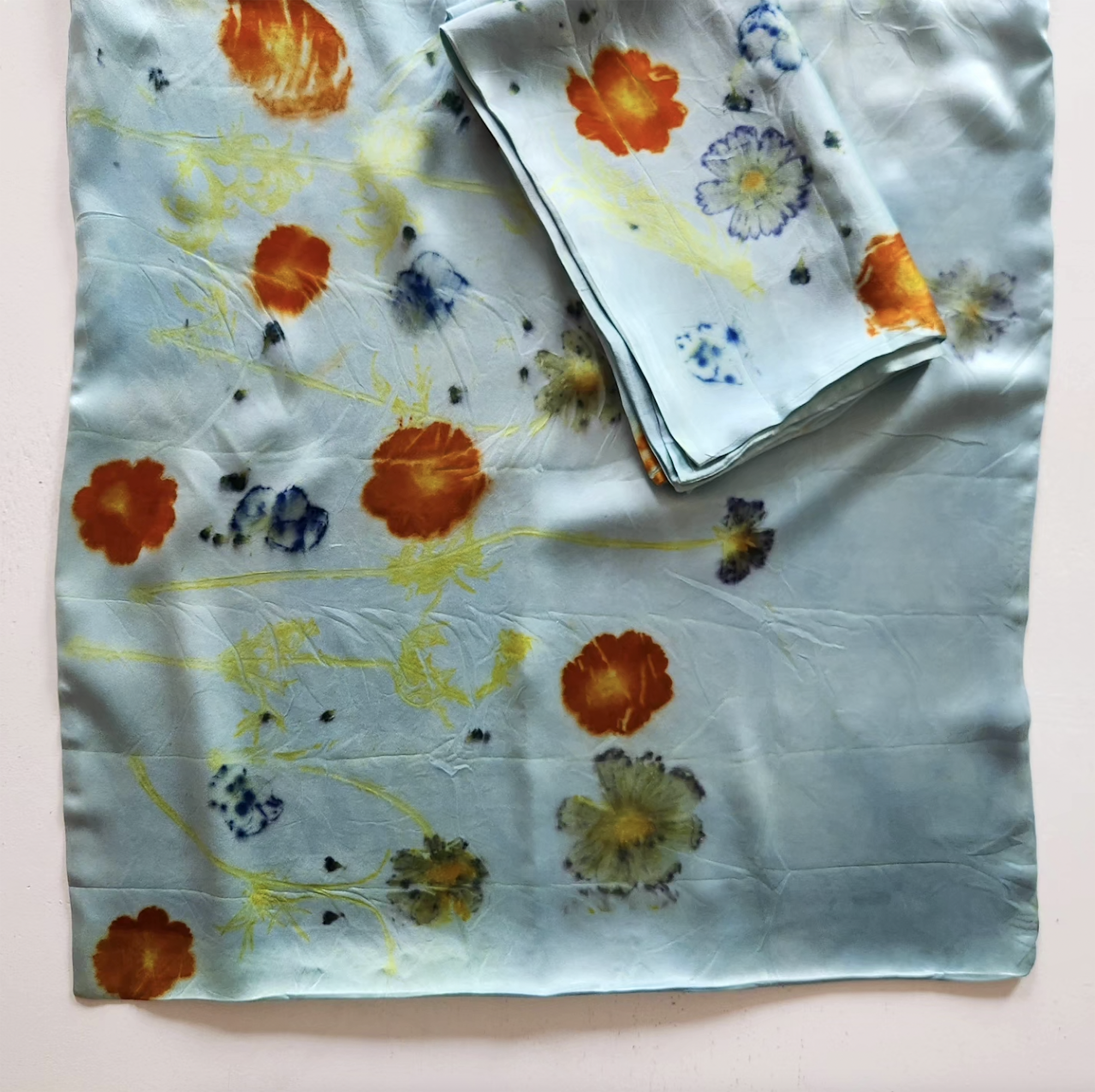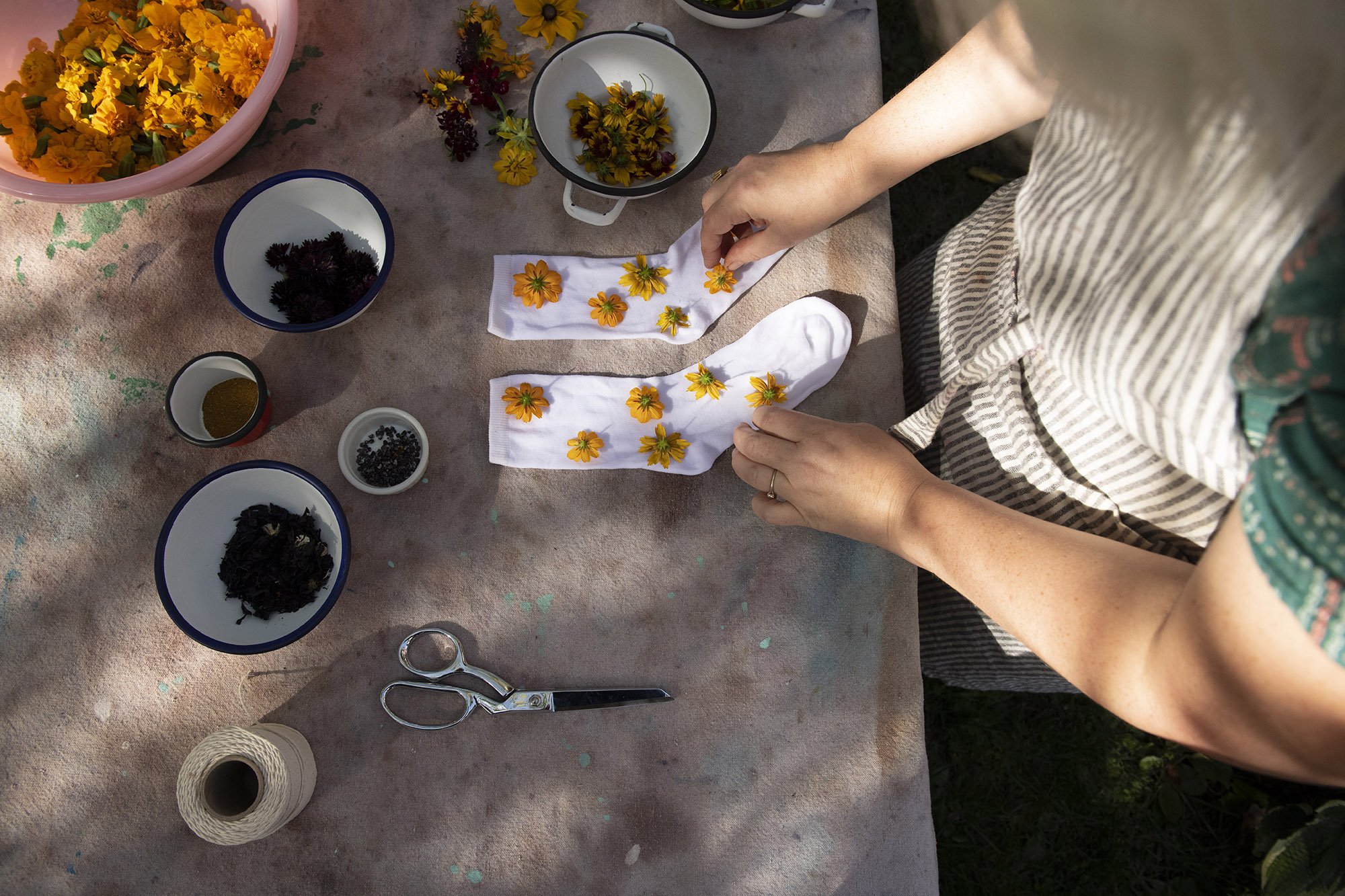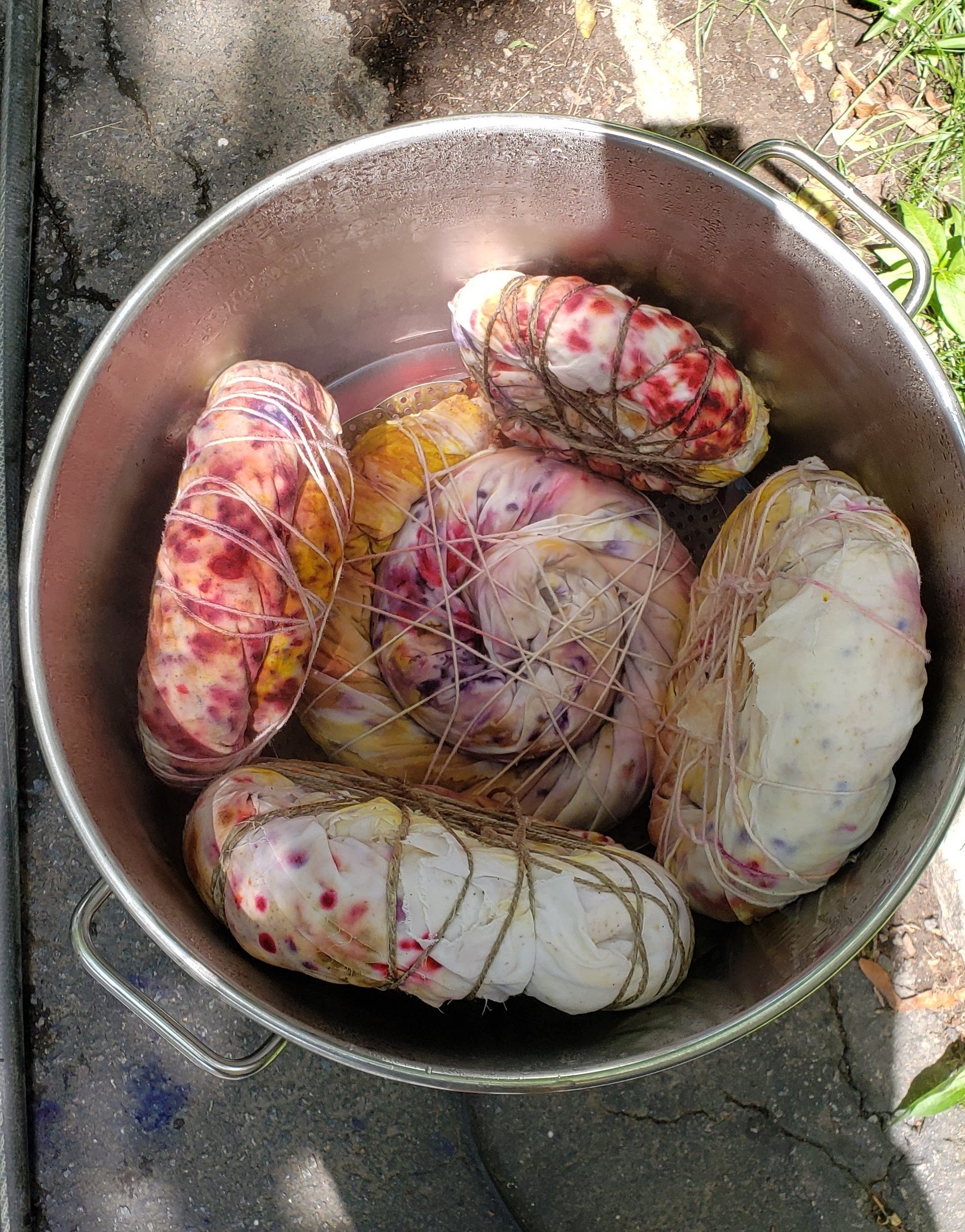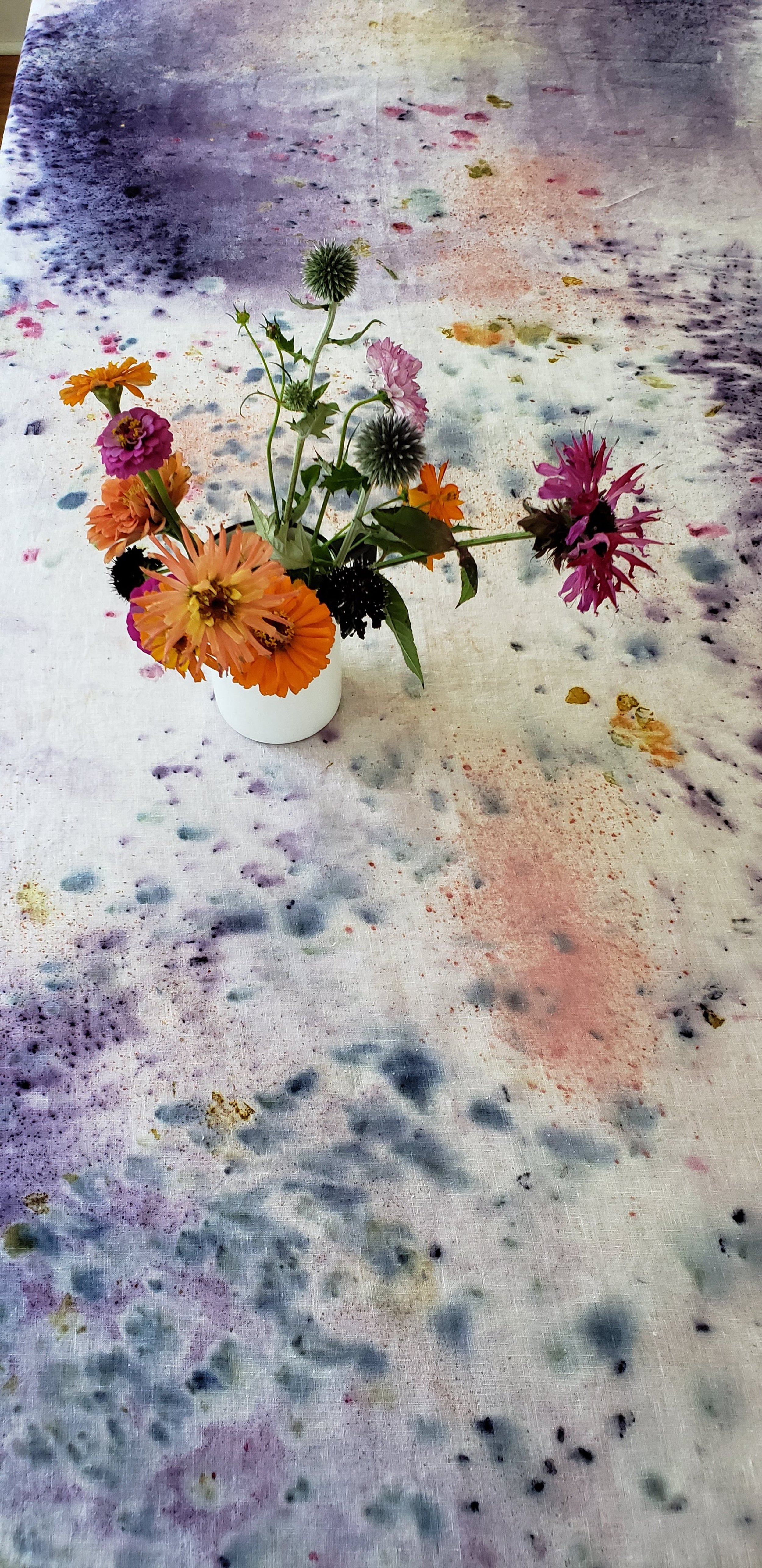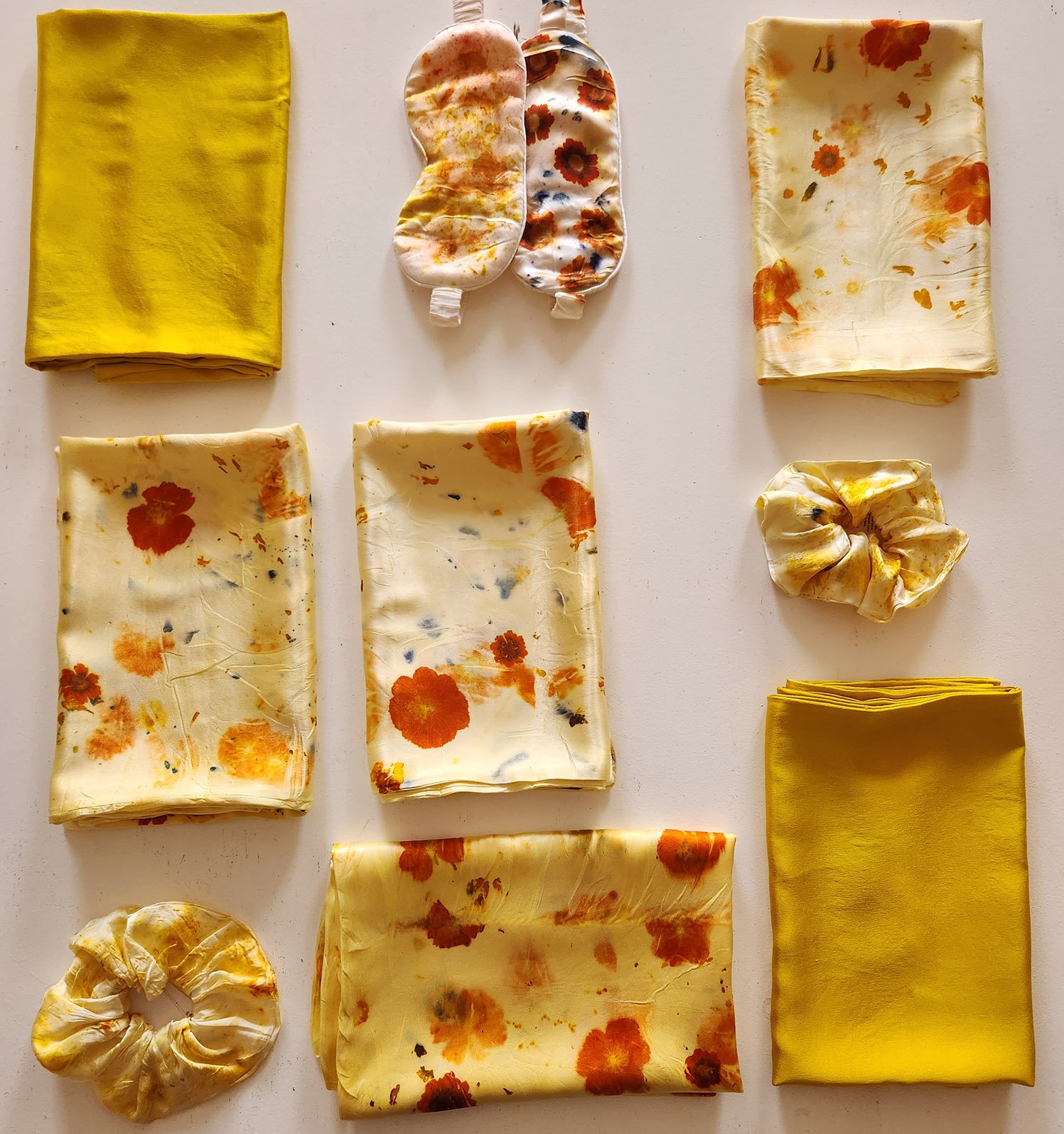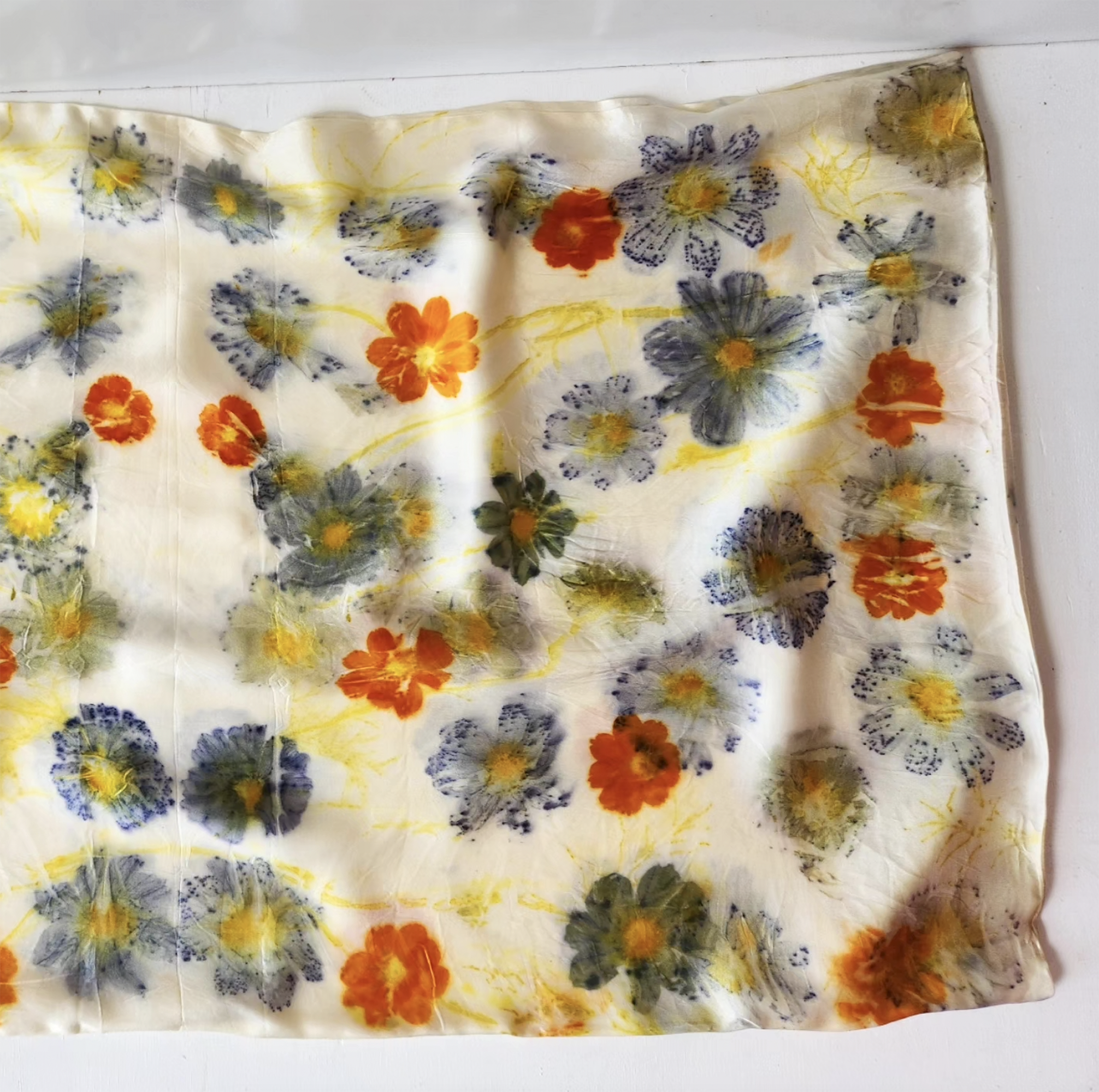A unique story whispered by flowers and leaves
Meet Amanda de Beaufort, the creative mind behind a_db botanical color, a line of hand-dyed textiles made with love and nature’s vibrant palette. Discover her passion for connecting with nature even amidst urban landscapes and the process behind transforming plants into wearable wonders. Amanda’s story is about about finding joy in the handmade, embracing slow living, and sustainability. So, get ready to be inspired by her creativity, dedication, and the magic that unfolds when nature meets textiles.
Amanda de Beaufort picking flowers by Claire Weiss.
Hi Amanda, nice to meet you! How are you today?
I am good! I just finished my garden planning for the spring.
Could you tell us a bit more about yourself?
I am from Alaska and moved to New York City in 2004 to work for an architect—I still work for the architect! I studied art in college and love working with my hands. I am married to a wonderful man, Alain de Beaufort, who helps me with the botanical dyeing business I have two kids that are in middle school, and a cat named Kiki who doesn’t help with anything.
Where is your studio located?
We are located about 20 miles outside New York City in Maplewood, New Jersey. I do all my dyeing production in the basement of my home and I have a studio space around the corner.
How is it to be working with nature and living near New York City?
I lived in the NYC area for twenty years now, and I still ask myself how is it that I ended up here!? I have always had a love of nature and the wild landscape. Being from Alaska I spent so much time in nature, and then I lived in Oregon which is also a beautiful place to live. So city life is very different, it satisfies my appetite for culture, but not nature.
One of the amazing things about botanical dyeing is you can use a wide variety of plants, many of which are growing in parking lots and public parks. I live outside the city now, but it is still an urban landscape. I grow almost all of my dye plants in my tiny yard or the community garden down the street. I like that natural dyeing keeps me connected to the earth and the natural world around me even surrounded by a manmade environment.
When did you launch your botanical dyed product line, a_db botanical color?
I started botanical dyeing right when we left the city for the suburbs in 2016. At the time, I wrote a children’s design blog as a creative outlet and I was working full-time in the City at the architecture studio. I felt I was spending all my time staring at a screen and I wanted to do something with my hands. So I stopped the blog and took up a new side hustle.
And how did you started?
It was a bit random. I bought some natural dyes from Audrey Louis Reynolds and I loved dyeing my daughter's dresses. My friend suggested I try avocado dye, which was all over social media at the time. Then I just became obsessed. It was all I could think about and all I wanted to do was try the next botanical project.
That went on for about a year, and I resisted setting it up as a business. I wanted to have just a hobby. That didn’t last long and by 2017 I was very busy with a full-on business.
Amanda by Claire Weiss.
“I’ve always been interested in fiber arts and gardening. When I started on the path of natural dyeing it combined my love of textiles, art, and nature perfectly.”
We love the fact each piece is one-of-a-kind and hand-dyed! Do you do everything by yourself?
I make every piece myself, in the past couple of years my husband has helped me in the studio— so it’s either me or him now!
Amanda and her beautiful harvest by Claire Weiss.
Could you tell us where all the colors come from?
We are known for our flower prints that are made primarily with cosmos and coreopsis. We use a lot of marigolds and hollyhocks. We also forage plants like goldenrod, sumac, and black walnut— these are found growing along highways and local parks.
Of course, I also use plant extracts that we buy from natural dye houses like madder root, logwood, cochineal, and osage.
Do you home-grow all your flowers and plants?
Not all, but a lot. In summer we grow a few varieties of cosmos and coreopsis which are the workhorses of our dyes. Scabiosa, Marigolds, indigo, bachelor buttons, and dahlias are also grown at our house. We are always experimenting with new plants too!
Which one is your favorite and why?
That is hard! Probably cosmos, they are so easy to grow and their bright orange color gives so much! They print beautifully and you can simmer the flowers in water and get the most incredible deep orange color for dyeing or painting. There are other color varieties too like the deep pink ones print green-blue! They are magical.
Amanda working on a pattern composition by Claire Weiss.
Could you let us know about the steps to create a natural dyed item?
I have a great online course at Domestika that shows you all the steps to print with flowers— It isn’t as simple as it might seem and not all flowers work.
The main steps are scouring the fiber (a deep cleaning) mordant (prepping fiber, I use an aluminum salt that allows the dyes to create a permeant bound), and then the dyeing. You can bundle dye or do an immersion dye. There is also the whole indigo process that is totally different and also super fun!
Which step would you say is the more difficult one to achieve?
Patience. I think people, myself included, at first, don’t want to take the time to scour and mordant. It’s labor intensive and not the fun part, but the most important.
What are you currently working on?
I am incredibly fortunate to be working on a lot of things right now. I am doing a big collaboration with a US brand that will be coming out this summer. I’ve been developing an at-home dye kit and we are expanding the studio and currently looking for a larger space. And dreaming of spring!
Don’t forget to check out Amanda's online course and learn the secrets of flower printing yourself!
Visit a_db botanical color & @dyekween


